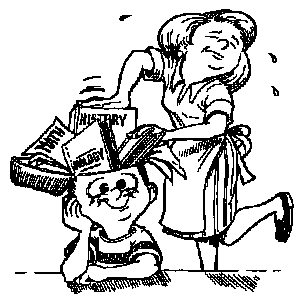 Have you ever walked into a room, stared at the wall and forgot why you went in there? What failed you was your working memory. You were supposed to store the plan of what you were going to do next in your working memory until you retrieved that pencil or glass of juice.
Have you ever walked into a room, stared at the wall and forgot why you went in there? What failed you was your working memory. You were supposed to store the plan of what you were going to do next in your working memory until you retrieved that pencil or glass of juice.
We all differ in the amount of information that we can keep in working memory, and how easily it is lost when we are distracted. Children and adults see the effects in everyday life. If your job is based on routines, you might not suffer that much from having a low working memory. But a child in school is required to learn new things every day, and a low working memory will have severe impacts. Here is how:
1. Ability to focus
The brain systems responsible for keeping information in working memory largely overlap with those that control your ability to focus. Loosely put, “you need to remember what to focus on”. This overlap is also evident in everyday functioning.
In a study of students with low working memory capacity, Michael Kane, at University of North Carolina, found that these students more often spent their time off task and daydreaming, especially when the task at hand was challenging. However, student with relatively high working memory kept their attention on the task, even when it was challenging.
2. Remembering instructions
The ability to remember what to do next is something that we constantly depend on. We use our working memory to keep those plans in mind. School children not only have to keep their own plans in mind, but also have to remember the constant instructions from their teachers.
In a series of studies of school aged children with low working memory, Susan Gathercole and colleagues at York University in the UK found that one of the most prominent problems in the classroom was to remember instructions.
3. Math achievement
Calculate in your head what 6 x 13! It is likely that when you do this, you will do it in several steps: first the tens, then remember the result, then the ones, and then remember the result and add it to the previous result. In a task like this, and many other problem solving tasks, we solve them in steps and need to remember the intermediate results somewhere. That somewhere is your working memory.
Although working memory is generally associated with academic performance, the link seems especially strong to mathematics. Differences in working memory among children explain roughly half of the differences in math achievement.
In a recent study the neuroscientist Iroise Dumontheil and I demonstrated that when children perform a working memory task in the MR scanner, the brain activity in the parietal cortex, (an area important for storing spatial information), not only correlates with math achievement, but also tells something about the child’s math performance two years later.
A bad recipe for learning
Without a plan in mind, a child’s behavior becomes unorganized and erratic. Add inattention to this, and it is not a good recipe for learning. This behavior is very similar to that of children with ADHD, and indeed, children with ADHD also have low working memory on average.
But in contrast to children with ADHD, the children with low working memory are not necessarily hyperactive, and girls are as highly represented as boys. But without the hyperactivity, the daydreaming girls or quiet but inattentive boys are not as easily identified by the teachers. Children with low working memory could, according to the studies by Gathercole, constitute as many as 15 % of all children, and is a large but overlooked problem.
Source:
http://www.psychologytoday.com/blog/the-learning-brain/201211/working-memory-and-school-performance
